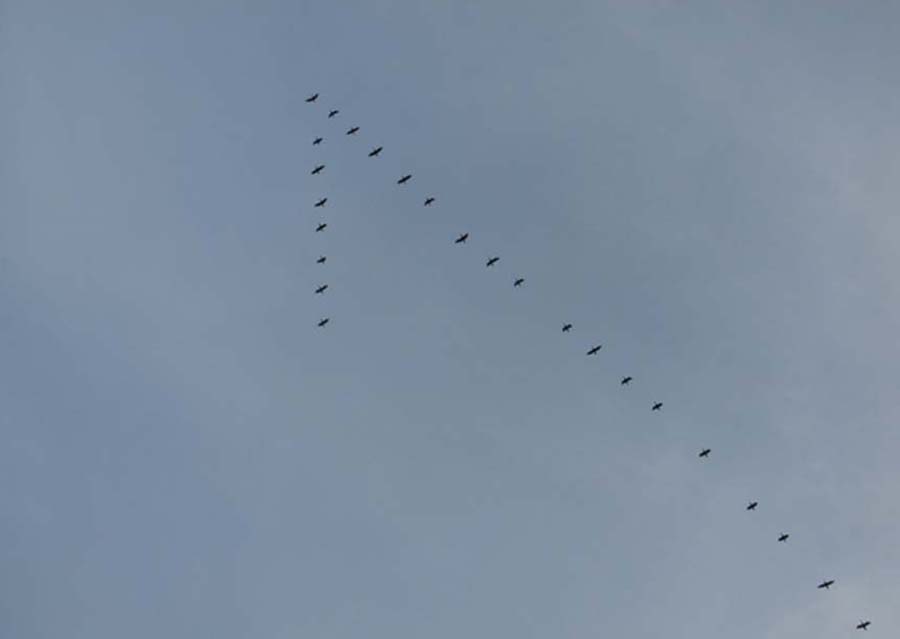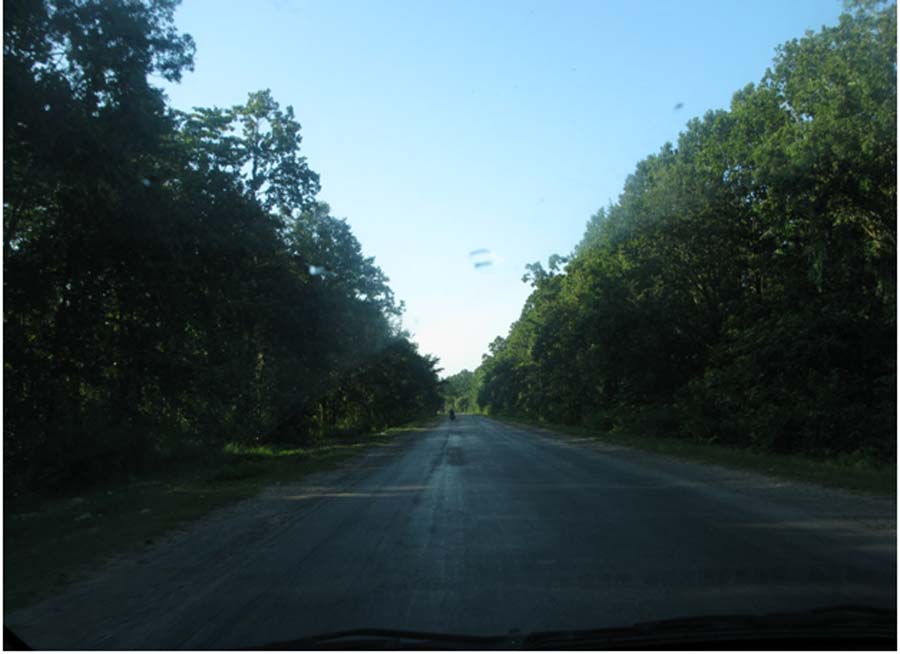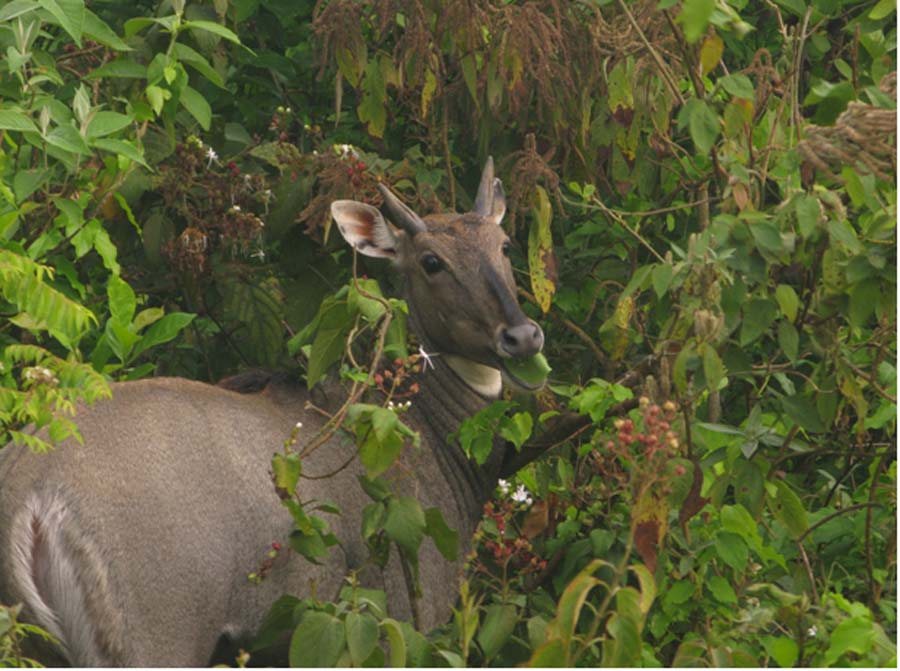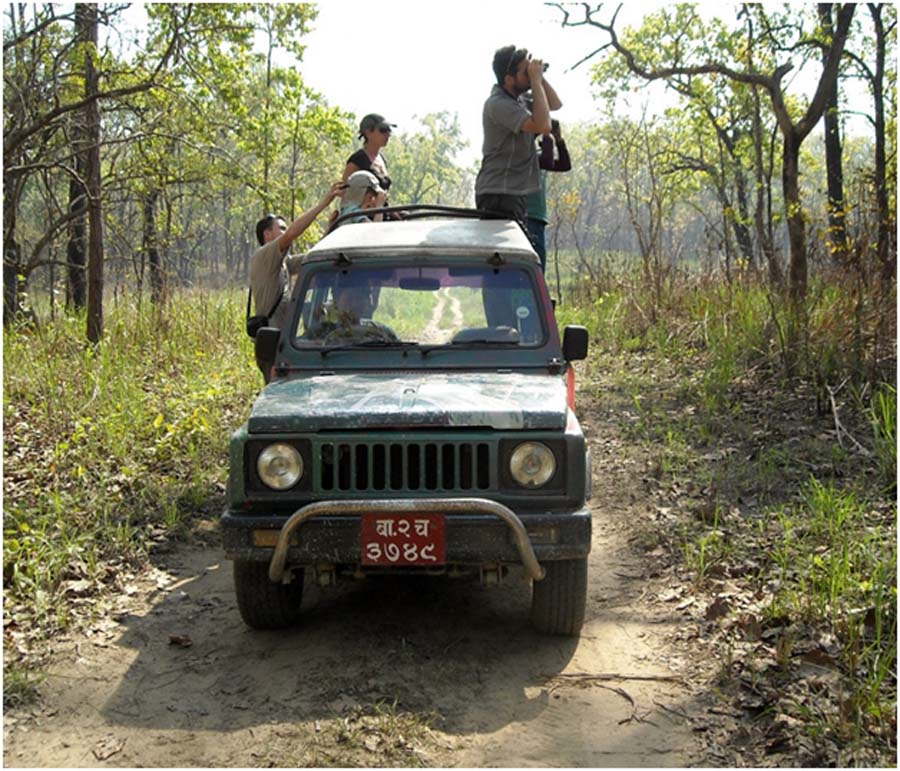What I saw in the dim light, less than a foot behind the bull-cart, made the fine hairs rise on the back of my neck and arms, and I started shaking like a leaf.

Sight. Hearing. Touch. Taste. And Smell. The Greek philosopher Aristotle identified these five senses in humans. What’s more, for eons, an inexplicable intuitive faculty, exhibited by animals, baffled the humans the most. It came to be known as the ‘sixth sense.’
Every day, when my neighbour is back from work, his dog whines, whimpers, barks, and whirls around in circles at the sound of his master’s scooter when it is still a fair distance away. Another of his next-door neighbour has an identical scooter—same power displacement and, obviously, the same sound. But the dog remains quiet when it sounds.
Strange but true
Animals do weirder things we can barely imagine. The Himalayan golden mahseers home in on their birthplace to spawn hundreds of miles upriver. So do the Atlantic salmons to breed, traveling over 1,000 miles from the sea to the river. Much the same, the sea turtles return to the same beach, where they were born to lay eggs.
Likewise, the demoiselle cranes on their annual migration fly from Siberia to their wintry habitat, as far away as the Thar Desert in Rajasthan, India. Strange as it may sound, birds migrate using celestial cues. Bats locate food, with echoes. Believe it or not, dogs can discern if you were sad, angry, or suspicious. Nay, if you’d had a row with your wife!
Defying the laws of nature, history records a plethora of strange events wherein both domestic and wild animals have displayed an uncanny sense of predicting danger through their actions beyond scientific understanding.
ESP
I never seriously took the matter about the much-talked-about sixth sense, said to be possessed by animals. The incident that took place some 25 years ago made me, however, change my mind as it saved me and the lives of my three friends. I will relate the anecdote shortly.
Joseph Banks Rhine, a parapsychologist from Pennsylvania USA, named the phenomenon as ESP (extrasensory perception). This psychic faculty of the mind was also named telepathy, clairvoyance, or psychometry. Some even called it the ‘second sight.’
Scientists have moved heaven and earth to unravel the mystery surrounding this behavioural shift in animals, which predicted impending danger, but to no avail. They failed to reason or logically explain these behaviours that defy the science of deduction. At best, they could offer only hypothetical explanations.
Premonition of danger

In Nepal too, we keep hearing about queer animal behaviours preceding disasters like an earthquake. Crows shriek and fly frantically in circles, blanketing the sky. Dogs bark, howl and whine restlessly. Even the weather seems to shift as the slightest of breeze suddenly comes to a standstill.
A little before the devastating earthquake struck in April 2015, people swore by witnessing strange animal behaviours all around the country.

Bishnu Nepal, a local of Dhading, saw, a little before the tremor, a couple of jackals suddenly dart out from the woods to an open field in plain sight of the villagers. Manju Silwal, again from Dhading, was miraculously saved by her loyal dog. She was virtually dragged out of her house by her dog while breastfeeding her baby.
The house was razed to the ground less than a minute later. Bina Acharya from Pokhara, watched in dismay, a pair of leopard dash out of the brush into the open at the local Bhadrakali forest. (Extracts from an article by Chun B. Gurung and Raju Acharya: The Himalayan Times dated July 1, 2015).
Contemporary scientists, grossly skeptical, do not still appear to believe in this phenomenon called the sixth sense, but cannot furnish logical explanations for it.
Wave of destruction
December 26, 2004, a day after Christmas, proved a doomsday for millions of people across Asia and a part of Africa. At 7:59 am, an undersea earthquake with a magnitude of 9.1 on the Richter scale hit the coast of the Indonesian island of Sumatra, bringing in its wake a series of the tsunami across the Indian Ocean.
The catastrophe devastated the coastal areas of more than seven nations extending to as far away as East Africa. The worst-hit was the epicentre, Banda Aceh, Indonesia.

Called the Wave of Destruction or the Boxing Day Tsunami, it proved one of the deadliest in recorded history. In a matter of hours, it took away a staggering 300,000 lives, rendering thousands homeless. Mysterious sightings of animal behaviour were reported a few hours before the disaster, which sounds anything but anecdotal.
In Thailand, a little before the tsunami struck, an army of ants by the thousands was sighted rushing helter-skelter from the beach into the woods located at an elevated location. So did the elephants to higher grounds. Zoo animals cringed and hid in their cage. Dogs refused to venture out of their homes.
According to National Geographic, when the tsunami hit, flamingos abandoned their low-lying breeding areas. The Indo-Asian News Service reported that along India’s Cuddalore coast, where thousands of people perished, buffaloes, goats, and dogs were found unharmed. People believed it to be the sixth sense that saved their lives.
A Sri Lankan man named Corea was quoted by the National Geographic, saying, “One friend, in the Southern Sri Lankan town of Dickwella, recalls bats frantically flying away just before the tsunami struck. Another friend, who lives on the coast near Galle, said that his two dogs would not go for their daily run on the beach.” As they say it, the fact is stranger than fiction, could not be any truer.
Angel of Death
In 2005, a cat called Oscar took the world by storm. Oscar was no different than any other ordinary cat. Adopted when six months old by a nursing home called the Steere House Nursing and Rehabilitation Center, Providence, Rhode Island, USA, he was just a little gray-and-brown furry pet, quiet and withdrawn, who liked to spend most of his time curled up in a corner.
One day, Oscar crawled up to a patient’s bed and snuggled beside her feet for close to four hours without budging. Oscar quietly left after the patient died. Nothing appeared unusual for the staff at the nursing home. To the dismay of the nursing home staff, the eerie incident, however, repeated time and again.
In five years, the number of patients Oscar kept vigil before they died rose to more than 50. She came to be christened as the Angel of Death. As of 2015, Oscar was said to have predicted 100 deaths. He is still alive today and lives at the Steere House Nursing and Rehabilitation Center.
A close brush with death
Some 25 years ago, I’d gone to Nepalgunj for a week-long hunting trip. We planned to try the Shumshergunj forest 30km away from the city. Hunting was open those days, and we had a valid licence issued by the Wildlife Department for the Banké district.

After a day at the burgeoning city, which appeared nothing but dusty, noisy and chaotic, I and three of my partners decided to pitch camp in the jungle of Kachnapur, some 10 km from Shumshergunj deep inside the CharKoshé Jhadi, (literally 14.48 km forest in width, which stretches from one end of east to the other end of west Nepal).
With the nitty-gritty taken care of for a week, we set off armed to the teeth with our armoury. The tropical Terai forest and shrub always held an overpowering fascination for me whenever I’d the opportunity to visit it mostly for hunting. In those days, the Terai forest with ample game was the ultimate for every avid hunter. Sadly, we have lost most of the jungle and its wild inhabitants today.

After Shumshergunj—a cluster of homesteads and teashops—as we took the dirt road, we ran into hordes of cyclists with their bicycles laden with firewood going about their ways. The Tarai forest then was a rich source of fuel-wood for the villagers. The forest authorities turned their backs on the locals collecting deadwood strewn across the jungle and by the fire-lines.
We set up the camp near a waterhole deep inside the jungle. Two Tharu guys kept us company as helping hands. For three days, we enjoyed the hunting, better than we’d expected, and the bag was good. Besides the Cheetal deer, the forest had wild boar and plenty of game birds including jungle fowl, black partridge, and occasional peafowls. The forest also was home to endangered species such as the blue bull (Neel gai or godh gadha), and the barking deer (Ratuwa).

Everything worked fine until the fourth day. On the fifth day, the jeep we hired from Nepalgunj, however, broke down. The driver failed to fix the jeep despite repeated attempts. Worse yet, the battery gave up. That did not only end our hunting but left us stranded in the jungle. The exasperated driver kept swearing in frustration. “There goes our hunting,” one of my mates bellowed in disgust. I just watched helplessly.
“Hold your horses, sirs, please do not despair,” said one of our Tharu guides. We were all ears. “I’ll take you hunting tonight on a ladiya (a bullock-pulled cart).” Of all things, a ladiya, I said to myself in disbelief. My friends, too, must have felt the same as their expression spoke it.
“How about the spotlight? How’ll you manage it?” asked one of my friends. “No worry, sirs. We’ll use flashlights instead,” he said and added, “We often hunt that way.”

We agreed against our better judgment. As the Tharu guide left for the nearby village to fetch a cart, we rested and decided to take a shut-eye for the night meant keeping a long vigil. Our guide took quite a long time. As it turned out, he could not find a bullock cart. He got one hauled by two fat buffaloes, instead. Beggars cannot be choosers.

After what seemed like two hours of wandering around with no sight of game, the flashlights, too, breathed their last. And as things stood, we suddenly realised that we were lost and had missed out on the main track.
We had to but find our way back to the camp, notwithstanding the total darkness. I was scared stiff. So were my partners. The guide barked out to the buffaloes to back off as we had to turn around. The bovines stepped back as ordered some five yards then stopped.
Our guide yelled and lashed with a whip, to back them off a little, but they did not even budge an inch. He tried again—nothing doing. We had to dismount so that the Tharu guy could steer them around, holding the reins. I lit a cigarette with my lighter, and in the faint glow of the flame, stepped back to look around.
What I saw in the dim light, less than a foot behind the cart, made the fine hairs rise on the back of my neck and arms, and I started shaking like a leaf. The buffalo-driven cart was inches away from a ridge that fell almost 50 feet down to the Rapti River. Did the buffaloes know death lurked less than a foot behind? Was it the ‘sixth sense’?





















